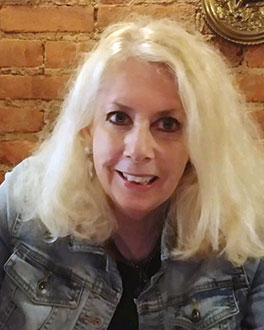 Staffing challenges in post-acute and long term care aren’t limited to clinical staff and frontline workers. There is a shortage of skilled administrators as we move closer to the silver tsunami and Gen X exile expected to hit the sector in the next 10-20 years. Where is the next generation of administrators coming from?
Staffing challenges in post-acute and long term care aren’t limited to clinical staff and frontline workers. There is a shortage of skilled administrators as we move closer to the silver tsunami and Gen X exile expected to hit the sector in the next 10-20 years. Where is the next generation of administrators coming from?
An Amazing Adventure
Most long term care facility administrators are surprised that others wouldn’t want to pursue careers in this care section. Good Samaritan Society’s vice president of operations Aimee Middleton is one such professional. Inspired to become an administrator after her father-in-law’s illness, she saw numerous opportunities to use her business skills and passion for service. “It’s an amazing career. It’s incredibly rewarding, and you have an impact on many lives.”
Yet, the profession seems to be a well-kept secret. According to a recent Skilled Nursing News survey, 58.6 percent of respondents say they expect hiring administrators to get harder than it already is. Over half also said they think it will be more challenging to retain administrators. At the same time, survey respondents identified three common ways to try to attract people to the administrator role: increased wages (56.4 percent), facilitating better work-life balance (38.4 percent), and offering more health benefits (12.8 percent).
Fortunately, there are some passionate innovators in the field who are finding ways to encourage new generations of leaders to consider careers as administrators.
Administrator-in-Training Program
The Good Samaritan Society has a successful Administrator-in-Training (AIT) Program, which is a paid internal management development program designed to attract those who are interested in the field to get more involved, get them trained and licensed, and move them into jobs where they can make a difference.
“We help people see what the job is and help give them the tools and resources they need to be successful,” said Middleton. She added, “We want to talk to business colleges and universities and educate them. I think we have a story about a career with a human component that a lot of people would find rewarding.”
The leadership team at Good Samaritan doesn’t just bring new administrators into the field and forget about them. “We help them see their career path and how we can help potential leaders. We also are actively engaged in succession planning,” said Middleton. This means having meaningful conversations with staff and encouraging them to speak at educational institutions and community organizations about what a satisfying, desirable career this is and the opportunities it offers.
Tom Syverson, director of government and external affairs at The Good Samaritan Society, said, “You have to reach people when they’re young and keep following them.” In addition to efforts to speak with students, apprenticeship programs, mentorships, internships, and efforts like ‘take a teen to work’ programs can engage young people and get them started on their career path even before they graduate.
California-based HumanGood also has an administrator-in-training program. David Larance-Patterson, director of learning and organizational development at HumanGood, explained, “You can be hired into the program, but we prefer to look internally to identify those who might be a good fit or those who have raised their hand to participate.” Participants get a full perspective of long term care—everything from skilled nursing, budgets and finance, and dining to buildings operations and grounds upkeep.
“It’s a competency-based program that enables people to experience what it means to be an administrator. We track their exposure to difference aspects of the job and have competency-based outcomes.” Program participants are also invited to engage with current residents through the resident council meetings so they can get views and insights from those living in the community. “It’s all done with an onsite preceptor, and we’re currently working to leverage a learning management system for tracking and documenting progress through the program,” said Larance-Patterson.
HumanGood also has a leadership development program called “Good to Grow.” This is a competency-based program that is mapped to diverse business lines, including health care, dining, and affordable housing. It’s a hybrid model with in-person and online learning opportunities. Once people complete this program, they have an opportunity to pursue a degree at the University of Arizona at no cost. Those AIT participants who want more, said Larance-Patterson “get priority seating in a Master’s of Health Administration program, where we always have a waiting list.” He noted, “You really have to be dedicated to do the full program, and earning the Master’s takes about 18 months.”
Larance-Patterson stressed, “We are very transparent up front and make it clear how we will work with them and cover costs. There is a ‘soft ask’ that they stay for a period of time after they complete the program but no agreement to sign. However, for the Master’s program, they have to stay for a year or pay back part of the funds.” People aren’t pressured if they decide this program isn’t for them. He said, “We’ve had administrators in training who went through the program and decided they did not want to finish it. We will work to find a different role within the organization, and that way we get to keep our top talent.” He stressed, “It’s no career killer. People aren’t punished if they decide this isn’t for them.”
Leadership Development in Aging Services
Steve Chies, board chair of Vision Centre, is one of the many individuals who wanted to share his passion for the field with others. He started thinking about how to attract new people to administrator careers and keep them growing.
In 2004, he worked with AHCA/NCAL to establish the Future Leaders program. The year-long program kicks off with a two-day symposium, “Future Leaders of Long Term Care in America,” held each year in Washington, D.C. Selected participants have demonstrated leadership potential and an interest in presenting the interests of providers at the state and national levels. The program covers the latest theories and practical applications in quality management, customer satisfaction, and leadership.
Chies later partnered with Douglas Olson, chief executive officer (CEO) of Vision Centre, for the Leadership Development for Aging Services program. This relatively new effort is non-profit and designed to inspire passionate students in the field of aging services to meet the leadership needs of the country with quality higher education programs and partnerships for rewarding, impactful careers. The Centre’s goal is to create 25 university and college programs nationwide. It also aims to facilitate from these programs 1,000 paid residencies among senior care and aging services by 2025. The program is off to a strong start with broad support from people like Chies and John Cochrane, CEO of HumanGood, who is on the advisory council of Vision Centre.
“These kinds of leadership programs are essential. We need to invest in our future leaders and have a bench strength,” said Olson, adding, “They provide stable, quality leadership that leads to better organizational performance.” He added that a “secret sauce” to these programs is a paid residency or internship. “If you can engage students and let them know they’ll be paid to learn, it’s an easier sell.”
The Leadership Development in Aging Services program is win-win-win for students, their academic institutions, and hiring organizations. But there still is work to do, suggested Olson. “We have to change the narrative about senior living professions,” he noted. This means spreading the word that if you want a job that has meaning and purpose, you can have an impact beyond what is possible in most other careers. Instead of asking people if they want to be administrators, Olson suggested, “We should ask how they would like a career where every day is different, and they are making a positive impact.” He stressed, “The labor shortage in leadership isn’t going away any time soon, and we need to find the people who are excited about this field. These programs can help the entire broad field of senior living get people engaged in this noble profession.”
The Need to Lead
The Vision Centre, said Olson, has found that people are often exposed to this field at an early stage in life due to career or family experiences, so organizations need to be paying attention to their existing talent pool. A good administrator can come from just about anywhere, so it is important to open opportunities to all those who may have limited experience but great passion and desire to advance their career. Larance-Patterson said, “It’s better when people opt in, but it’s also fine to go to people who show potential and invite them to participate.”
“I believe in leadership training for everyone. Everyone on your team needs to understand how things work,” suggested Michael Wasserman, MD, a California-based geriatrician and past-president of the California Society for Post-Acute and Long Term Care Medicine. “You never know when someone might be a great leader. It’s important to cast a wide net and enable everyone to have the opportunity to be empowered,” he said.
 Providing team members with leadership skills also can contribute to retention. Wasserman said, “Studies from a decade ago showed the value of leadership styles in terms of quality and turnover reduction. When you have the right type of leadership approach at the administrator, medical director, and director of nursing levels, you dramatically reduce turnover and improve quality.” Leadership training not only helps all team members feel more confident handling challenges and decisions, Wasserman said, it also helps them envision their career paths and seek ways to move up the ladder. “Having various career ladders gives people opportunities that make them better at their jobs wherever they go.”
Providing team members with leadership skills also can contribute to retention. Wasserman said, “Studies from a decade ago showed the value of leadership styles in terms of quality and turnover reduction. When you have the right type of leadership approach at the administrator, medical director, and director of nursing levels, you dramatically reduce turnover and improve quality.” Leadership training not only helps all team members feel more confident handling challenges and decisions, Wasserman said, it also helps them envision their career paths and seek ways to move up the ladder. “Having various career ladders gives people opportunities that make them better at their jobs wherever they go.”
Joanne Kaldy is a freelance writer and communications consultant based in New Orleans.